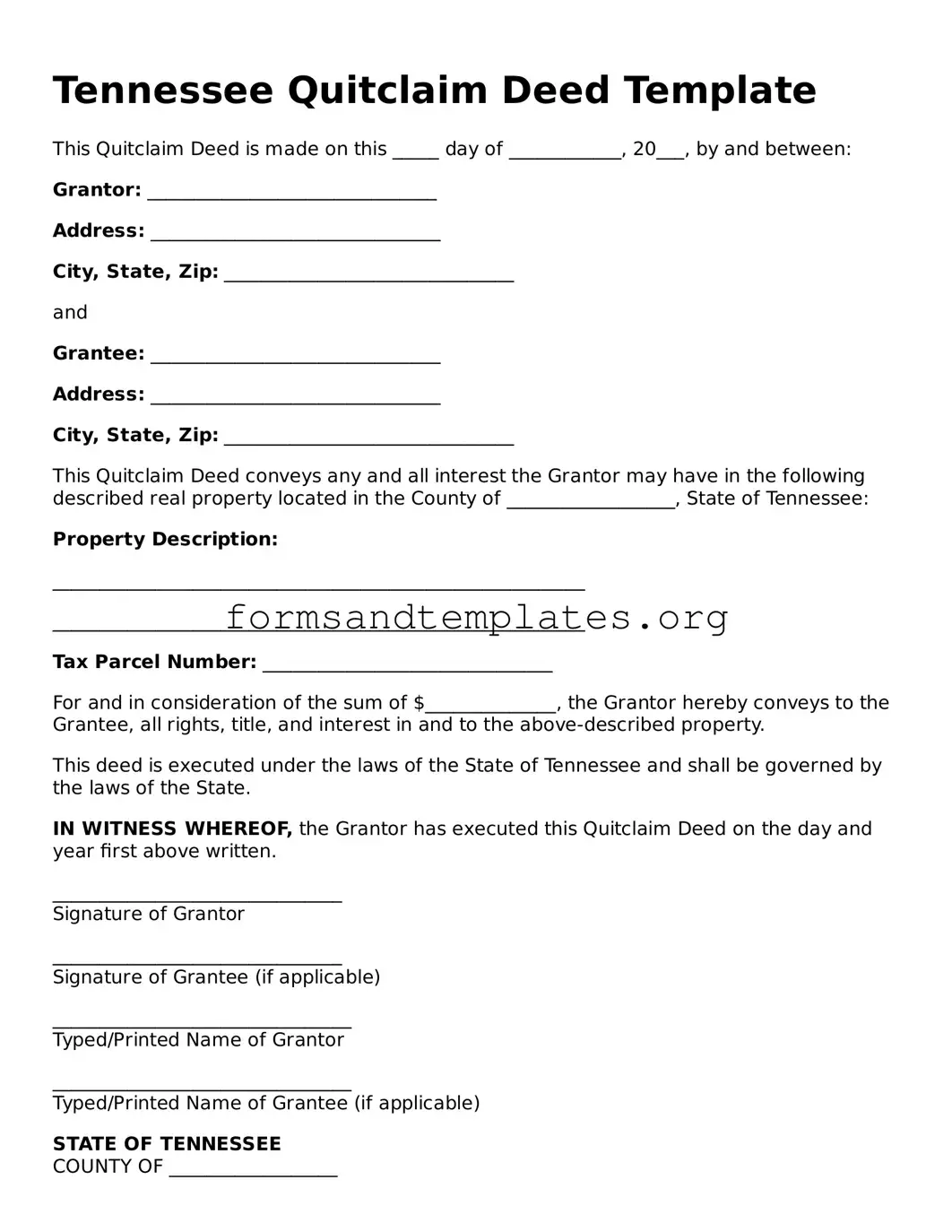Tennessee Quitclaim Deed Template
This Quitclaim Deed is made on this _____ day of ____________, 20___, by and between:
Grantor: _______________________________
Address: _______________________________
City, State, Zip: _______________________________
and
Grantee: _______________________________
Address: _______________________________
City, State, Zip: _______________________________
This Quitclaim Deed conveys any and all interest the Grantor may have in the following described real property located in the County of __________________, State of Tennessee:
Property Description:
_________________________________________________________
_________________________________________________________
Tax Parcel Number: _______________________________
For and in consideration of the sum of $______________, the Grantor hereby conveys to the Grantee, all rights, title, and interest in and to the above-described property.
This deed is executed under the laws of the State of Tennessee and shall be governed by the laws of the State.
IN WITNESS WHEREOF, the Grantor has executed this Quitclaim Deed on the day and year first above written.
_______________________________
Signature of Grantor
_______________________________
Signature of Grantee (if applicable)
________________________________
Typed/Printed Name of Grantor
________________________________
Typed/Printed Name of Grantee (if applicable)
STATE OF TENNESSEE
COUNTY OF __________________
Before me, a Notary Public in and for said County and State, personally appeared ____________________, with whom I am personally acquainted (or proved to me on the basis of satisfactory evidence), and who acknowledged that he/she executed the within instrument for the purposes therein contained.
Given under my hand this _____ day of ____________, 20___.
_______________________________
Notary Public
My commission expires: ____________________
